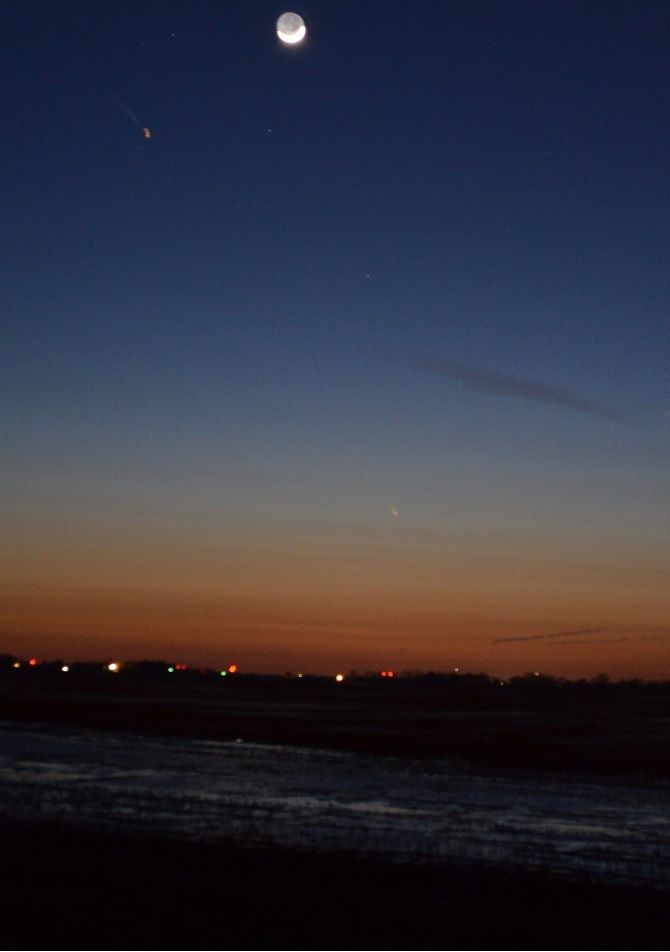
Posted on 03/15/2013 6:26:50 PM PDT by SunkenCiv
Explanation: After appearing in a popular photo opportunity with a young crescent Moon near sunset, naked-eye Comet PanSTARRS continues to rise in northern hemisphere skies. But this remarkable interplanetary perspective from March 13, finds the comet posing with our fair planet itself -- as seen from the STEREO Behind spacecraft. Following in Earth's orbit, the spacecraft is nearly opposite the Sun and looks back toward the comet and Earth, with the Sun just off the left side of the frame. At the left an enormous coronal mass ejection (CME) is erupting from a solar active region. Of course, CME, comet, and planet Earth are all at different distances from the spacecraft. (The comet is closest.) The processed digital image is the difference between two consecutive frames from the spacecraft's SECCHI Heliospheric Imager, causing the strong shadowing effect for objects that move between frames. Objects that are too bright create the sharp vertical lines. The processing reveals complicated feather-like structures in Comet PanSTARRS's extensive dust tail.
(Excerpt) Read more at 129.164.179.22 ...
[Credit: NRL / SECCHI / STEREO / NASA; Processing -- Karl Battams (NRL and @SungrazerComets)]
Growing Gallery: Comet PanSTARRS at Sunset
|
That makes the CME look really close. How far off is it?
Getting busy up there.
We live in Central Texas and still cant locate the comet. We look shortly after sundown and just above the western horizon. We got wide open skies and live in a rural area.
I guess we’re too late to the game.
Oklahoma weather guy said around 8:20pm a few days ago, but I couldn’t see it with binoculars. We have clouds so I won’t see it tonight either.

My cuz posted a really cool pic on my wife’s FB. See if I can pull that up.
Over 90 million miles, I suppose. :’)
Yeah, it was about that distance from earth on the 13th, so somewhat more than that, I guess. It looks close because it’s so big. The huge tail in the photo is due to special photographic techniques. It’s there, but we can’t see it.

I was able to see it the other night in Houston. I’m guessing it was about 30 min or so after sunset and just slightly north of due west.
Just barely visible with binoculars. It was only a feint smudge in the sky.
Comet PanSTARRS -- The Movie: On the evening of March 11, 2013, Comet PanSTARRS was captured in a time lapse sequence as it set over the Dos Cabezas Mountains.
Disclaimer: Opinions posted on Free Republic are those of the individual posters and do not necessarily represent the opinion of Free Republic or its management. All materials posted herein are protected by copyright law and the exemption for fair use of copyrighted works.